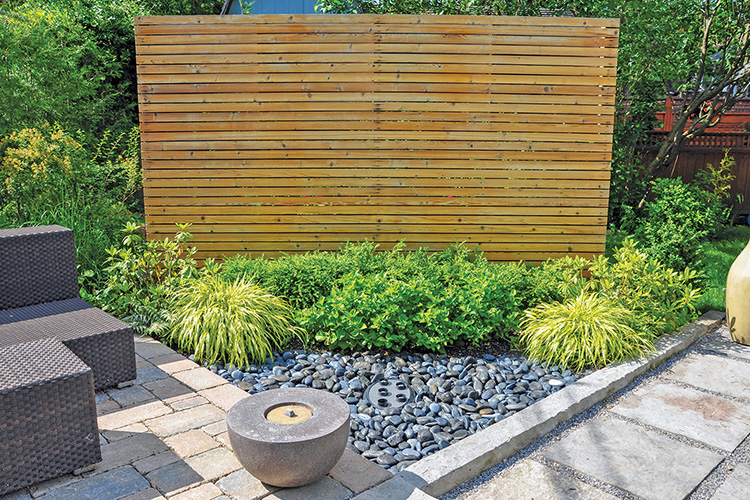Curb appeal can both make a home more attractive to buyers and give the existing homeowners a place they look forward to coming home to. In its study of the worth of outdoor remodeling projects, the National Association of Realtors found that standard lawn care and overall landscape upgrades were most appealing to buyers, as well as the most likely to add value to a home.

Although plants, grasses and other items can improve curb appeal, homeowners should not overlook hardscaping. Hardscape is an industry term that refers to the non-living features of a landscape. These features can include everything from decks to walkways to ornamental boulders. Hardscape and soft elements often work in concert to create inspiring landscape designs.
DIY landscape designers can use the following suggestions to make the most of hardscape features on their properties.

While some complex hardscaping, like building a fire pit, can be handled by novices, large-scale projects such as patios and decking can change the grading of the yard and are best handled by a professional. Shutterstock
CHOOSE MATERIALS – As with many landscaping projects, homeowners must first determine what types of additions they would like on their properties. Common hardscape features include walkways using pavers or bricks, and retaining walls. Hardscape elements can be functional or simply decorative features that add a touch of whimsy to the yard. “No Mow Lawns” are less common in Maine—stand out with graveled walkways and raised garden beds, then sit down with the time you’ve save by creating a minimal maintenance yard
CHOOSE A THEME – The right style will allow your hardscaping and softscaping materials to work together. For example, homeowners might be inspired by Japanese gardens, and complete theirs with a koi pond and decorative bridge or trellis. Those wanting a formal English garden might include manicured paths with stepping stones and ornate topiaries. Mixing too many styles together can detract from the overall appeal, so consider the total plan of your preferred design, even if all the work cannot be completed at once. This way, the project will be cohesive when it is eventually completed.

An English-style backyard with raised beds, gravel lawn, York stone path and manicured trees in containers. Shutterstock
THINK ABOUT THE PURPOSE – Hardscaping can look good but also serve key purposes. Pebbles or gravel can mitigate trouble areas that don’t support the growth of grass or plant life. Retaining walls hold back soil in yards with sharply inclined hills. Mulch can set perimeters around trees and shrubs, as well as planting beds. Fencing is essential in some yards for establishing property boundaries and privacy. If you don’t need containment, consider interspersing hardscape fence with softscape hedges for a more inviting look.
CONSULT A PROFESSIONAL – While some complex hardscaping additions can be handled by novices, like building a fire pit, large-scale projects, such as patios and decking, can change the grading of the yard. Professionals can map out how to handle drainage issues and meet building codes. In addition, professional installation can ensure that your hardscaping features will last for years to come.
Hardscaping should blend with the natural features around it and take its cues from your yard’s natural environment. This will help your yard’s softscaping and hardscaping to work as a cohesive design.
Comments are not available on this story.
Send questions/comments to the editors.


